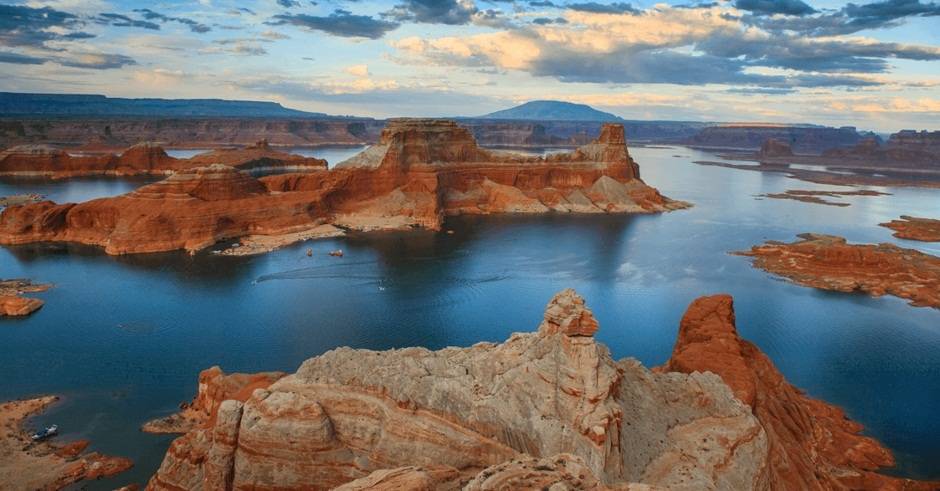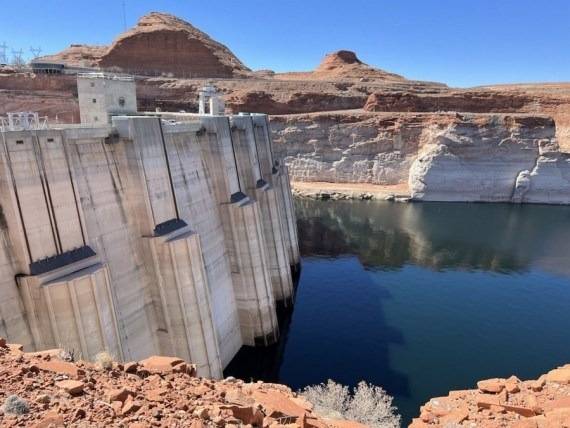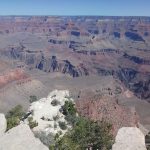Lots of things underneath Lake Mead have resurfaced in recent weeks, including formerly sunken boats, as the lake’s water level is continuing to decline, reports Asian Lite News
Surrounded by a white band of dried rocks, the vast drop in water levels was visible this week at Lake Mead, the biggest reservoir in the US, which has been shrinking amid a two-decade-long megadrought.
The “bathtub ring” around the drought-stricken lake, on the Arizona-Nevada border and over 40 km east of Las Vegas, is made of minerals deposited on the rock walls when the lake’s water level was higher, reports Xinhua news agency.
Some boat launching ramps along the lake were closed due to the low water levels.
Lots of things underneath Lake Mead have resurfaced in recent weeks, including formerly sunken boats, as the lake’s water level is continuing to decline.
Lake Mead’s water levels have dropped to historic lows since it was filled in the 1930s.
As of Friday, the water in the lake, formed by the Hoover Dam on the Colorado River, was around 1,042.3 feet above sea level, a decline of more than 43 feet from 1,085.95 feet by the end of January 2021, according to data from the US Bureau of Reclamation.
The highest recorded level of the lake was in 1983 when it was 1,225 feet above sea level.
The Bureau of Reclamation’s 24-month outlook released last month said it was forecasting the most probable lake level would be 1,014.86 feet by September 2023.
Lake Mead currently provides municipal water for the cities of Las Vegas, Henderson, North Las Vegas, and Boulder City, as well as municipal and industrial water and irrigation water for downstream users, according to the US National Park Service.
“Altogether, about 25,000,000 people rely on water from Lake Mead, and it is unlikely that the Southwest could have developed as it has without it,” said the agency in an overview of the lake on its official website.

If the reservoir drops below 895 feet, a possibility still years away, the lake would reach dead pool status, with potentially catastrophic consequences for millions of people across Arizona, California and Nevada, and parts of Mexico.
If the lake’s surface drops another 150 feet, there will not be enough water flowing through Hoover Dam to supply large metropolitan centres downstream, including Las Vegas, Phoenix, Los Angeles and San Diego.
The megadrought is draining Lake Mead faster than anticipated.
Water shortages and demand on the Colorado River Basin will require reductions in water use of 2 million to 4 million acre-feet in 2023 to preserve “critical levels”.
Last August, the federal government declared a shortage on the Colorado River for the first time, triggering substantial cutbacks in water deliveries to Arizona and Nevada, as well as Mexico.
Many Arizona farmers have left some fields dry and unplanted, and have turned to more groundwater pumping.
The megadrought that has gripped the southwestern US for the past 22 years is the worst in at least 1,200 years, according to a research published in the journal Nature Climate Change.
Jason Smerdon, one of the study’s authors and a climate scientist at Columbia University’s Lamont-Doherty Earth Observatory, was quoted as saying that global warming has made the megadrought more extreme because it creates a “thirstier” atmosphere that is better able to pull moisture out of forests, vegetation and soil.
While the Colorado River has been affected by previous droughts, a warming climate is predicted to alter the water cycle in new ways.

Long range climate predictions are for warmer winter temperatures in the Southwest, less snowpack in the Rocky Mountains, and less melted snow able to find its way into the Colorado River, the National Park Service noted.
Droughts in US West have also led water levels in many other major lakes to drop dramatically.
Shasta Lake, the largest reservoir in California, is reportedly at less than half of where it usually should be in early May.
Water level of the Great Salt Lake in Utah hit historic low earlier this month for the second time in less than a year.
ALSO READ: More than 11 million people in Ethiopia affected by drought














